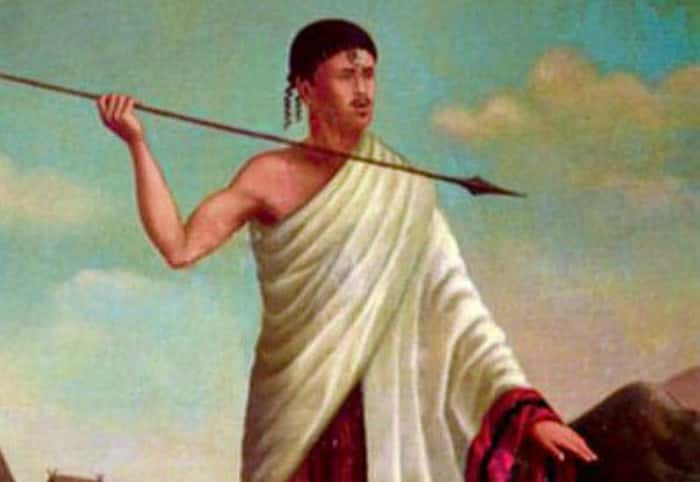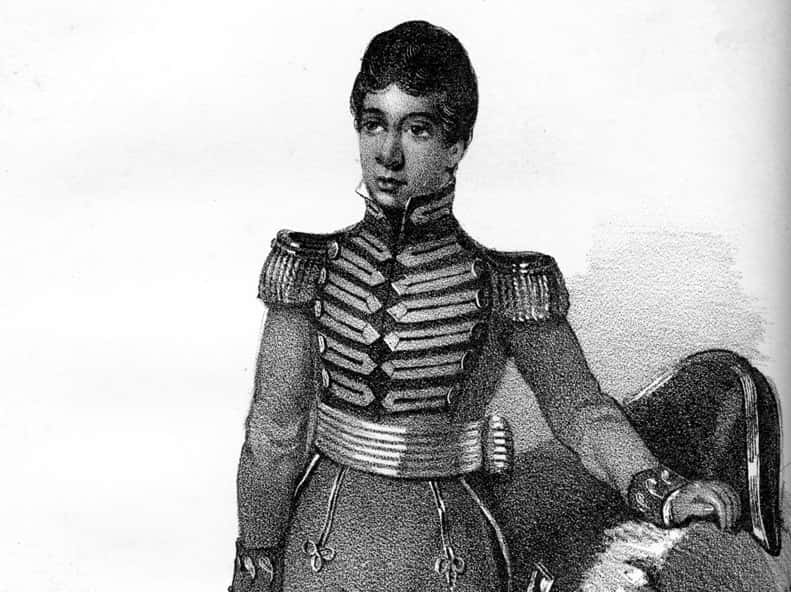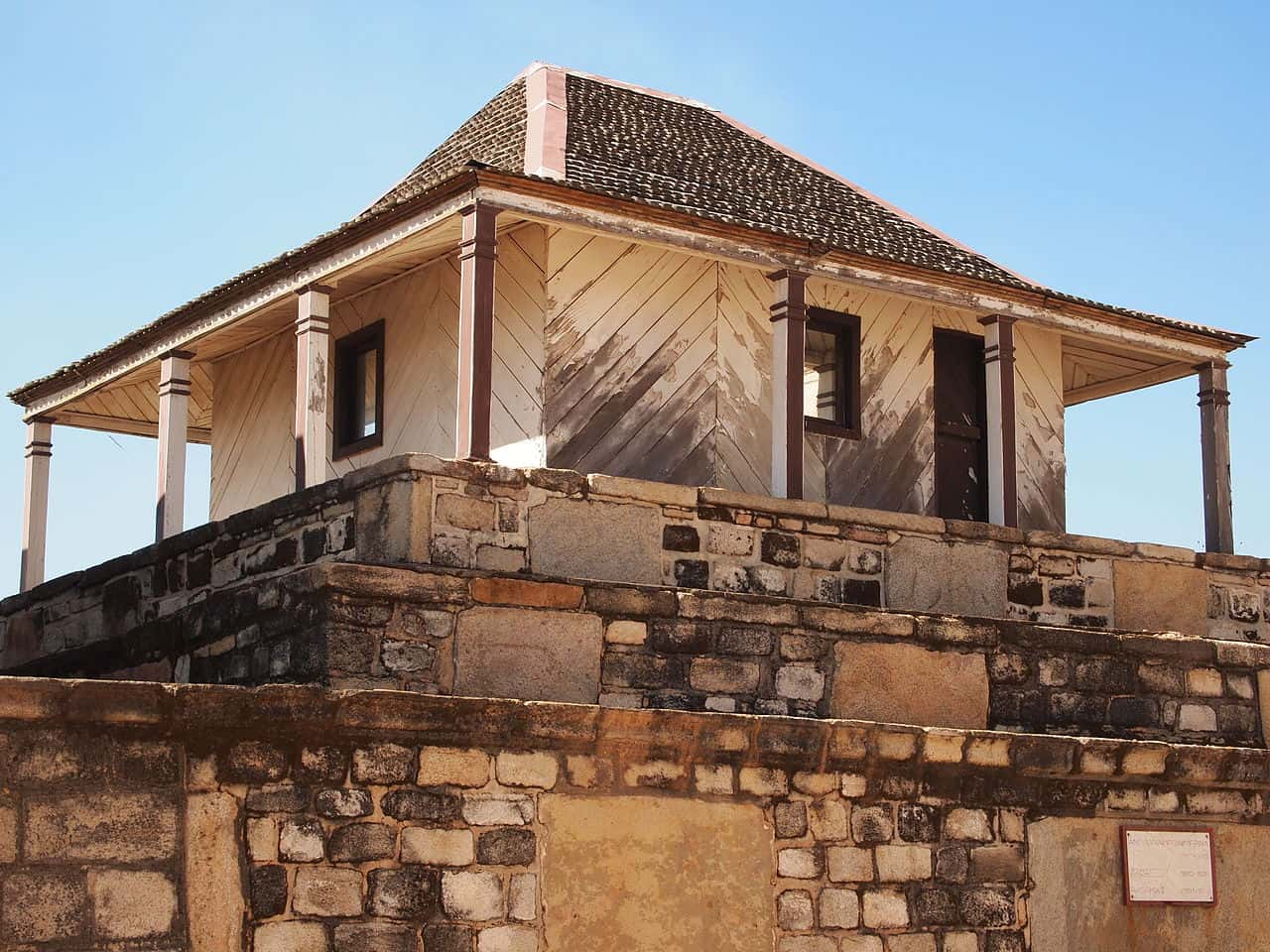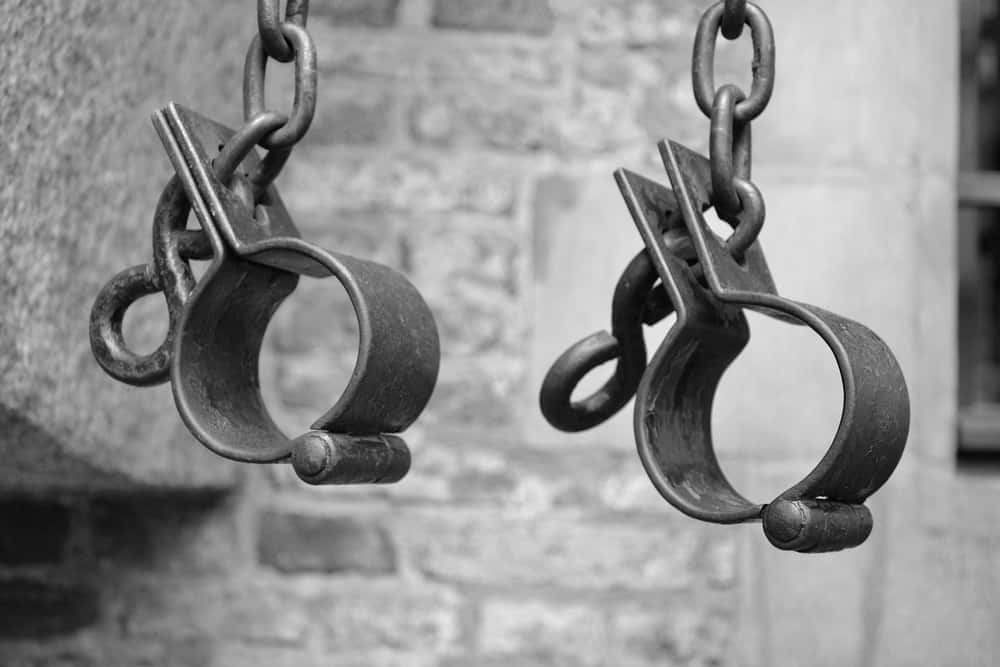One Heck Of A Reputation
“The Mad Queen of Madagascar.” “The Female Caligula.” “Ranavalona the Cruel.” Over the years, Queen Ranavalona has become known as a bloodthirsty tyrant. But for modern historians, her bad reputation is only half of the story. Was Ranavalona really a monster—or did Europe run her name through the mud because she didn’t put up with colonialism? Find out for yourself as we explore Madagascar’s most ferocious queen.

1. She Was Born To Rule
Let’s set the scene. It’s 1778 and we’re in one of Madagascar’s royal residences. The prince and princess have just welcomed a baby girl named Ramavo. But over the next few decades, she’ll level up to become Queen Ranavalona. How does she go from A to B? It all began when her dad overheard a very dicey conversation...
2. Her Father Was A Hero
When Ranavalona was only a baby, her father happened to overhear the King’s dastardly uncle plotting to overthrow his own nephew. Concerned, he ran to the King and revealed the traitorous plan. Thanks to the warning, the King took care of the threat, and he rewarded his whistleblower with a gesture that would change Madagascar forever.
3. She Nabbed The Prince’s Hand
The King pledged his son, young Prince Radama, to little Ranavalona. Now, even though Ranavalona was already part of Madagascar’s royal circle, this betrothal made her a new level of fancy. Not only would she be the country’s new Queen, any children she had got first dibs on the throne. But there was just one big catch.
4. Her Love Life Was Messy
In 18th-century Madagascar, kings weren’t exactly monogamous. So although Ranavalona was the first to walk down the aisle with the prince, she wasn't the last. In fact, she was very far from the last: Her husband Radama had 12 other wives. While this was normal in Malagasy culture, it still had some significant downsides for Ranavalona.
5. Her Marriage Wasn’t Happy
Ranavalona’s hubby became King in 1810, yet this did not mean that Ranavalona became Queen. Instead, he took care of business while Ranavalona twiddled her thumbs. Technically, she was Radama's most important spouse, but he wasn't super into her, which I guess is what sometimes happens when your dad tells you who to marry. And soon, Radama's neglect had disastrous consequences.
6. She Hated Her Husband
According to all accounts, Ranavalona and her husband didn’t get along. Want proof? They were together for almost 20 years and guess how many kids they had? Zero. This was a big problem for the royal family—historically, they’re kind of obsessed with heirs. But Ranavalona and Radama's marital problems went way beyond the bedroom.
7. She Got Belated Revenge
King Radama was notoriously paranoid, and when he took power, he systematically offed all the people who might have troubled his reign. Unfortunately for Ranavalona, some of those “opponents” happened to be...her entire family. Yeah, their unhappy marriage is starting to make more sense now. Not to worry, though: Radama met a brutal end worthy of his cruelties.
8. The King Met A Dark Fate
In 1828, Ranavalona’s husband breathed his last, and it wasn't a pretty way to go. According to some sources, Radama's final days were grisly. The King spent most of 1828 squaring off against some kind of illness. By July, he was so exhausted and delirious that he ended his own life. But that’s not the only story about his untimely end...

History's most fascinating stories and darkest secrets, delivered to your inbox daily.
9. She Experienced Karma First-Hand
According to varying sources, the reasons for Radama's dark end range from embarrassing to excruciating. Ranavalona's not-so dearly departed husband may have come up against malaria, rampant alcoholism or, in some accounts, a nasty case of syphilis. Hey, the guy did have twelve wives. But after he met his dark fate, Ranavalona made his funeral even wilder.
10. Her Husband’s Funeral Was Freaky
According to (probably biased) imperial historians, Ranavalona said goodbye to her husband with a series of increasingly deranged orders. First, she displayed his rotting body for months on end. Then, she forced all of Madagascar to shave their heads in mourning. The only people who kept their tresses had to do so for a wacky reason: Ranavalona ordered them to publicly pull out their hair as a sign of their grief. But she wasn't even done.
11. Her Orders Were Odd
Ah, Ranavalona. She could do “batty" like no one else. During the months-long period of mourning for her husband, Ranavalona also basically forced everyone to cry over the old King 24/7. If you did anything at all cheerful, including singing, clapping, sleeping on anything comfy, or even looking in the mirror, you’d be enslaved. All this for a guy she hated? I guess so. But maybe she was trying to cover up something...
12. Her Husband's Demise Was Scandalous
Most reputable sources say the King passed due to natural health complications, but there were darker whispers. Some rumors claimed that Ranavalona had a hand in his demise, and actually poisoned her husband. Why? So that she could claim the throne, of course. Unfortunately for Ranavalona, she had fierce competition for the crown.
13. She Fought For The Throne
After King Radama perished without an heir, the throne went to the next best thing: His nephew Rakotobe. However, that transition was anything but smooth. Here’s the situation: If Ranavalona had any kids—even with a new husband—they’d get the crown. This made her a huge threat. To secure his power, the new, green monarch had no choice but to take Ranavalona out.
14. She Lashed Out
Ranavalona was no dummy, and she knew that the best defense was a good offense. She gathered her supporters, got the army to back her up, and in August of 1828, she made her move. Ranavalona declared that she was the rightful ruler and she officially became Queen. Of course, part of her celebrations included punishing the man who tried to take her crown.
15. She Wiped Out Her Enemies
One of Ranavalona’s first acts as Queen was to, shall we say, solidify her victory (read: brutally destroy her competition). Ranavalona immediately sentenced her past challenger Rakotobe to death...along with his mother, cousins, and brothers. Pretty much just everyone he ever loved. But the thing is, that's not even the worst part.
16. Her Punishments Were Creative
In some accounts of Ranavalona’s revenge spree, our blood-thirsty Queen had an unusual problem on her hands. According to Malagasy tradition, she couldn't let one drop of royal blood spill when she wiped out Rakotobe and his relatives. This meant Ranavalona had to get creative. Instead of using swords, she had her victims starved or strangled.
17. She Could Be Sadistic
There are lots of fanciful stories about Ranavalona acting like a lunatic, so take those with a grain bucket of salt. But some of them are too amazing to leave out. Case in point: Supposedly, when Ranavalona was executing royals left right and center, she started to have a little fun. She summoned one victim, and when he arrived, she yelled at him for “abandoning his post,” then promptly had him executed. It’s a little evil—but I have to respect it.
18. She Conquered
After all this bloodshed, Queen Ranavalona’s coronation was quite the occasion. She wore a gold and red velvet crown as she delivered a fiery speech. The new queen declared, “Never say ‘She is only a feeble and ignorant woman, how can she rule such a vast empire? I will rule here, to the good fortune of my people and the glory of my name!” Queen Elizabeth I vibes, or just me?
19. Her Nation Was In Crisis
Here’s another reason why people sided with Ranavalona. In the early 1800s, Madagascar was at a tipping point, and the country felt divided between tribal traditions and recent waves of Christian missionaries. In this tense climate, Ranavalona promised to keep Madagascar from becoming a miniature England—and with that oath, she gained enough support to get the throne.
20. Her Love Life Was Spicy
After her loveless marriage, Ranavalona made up for lost time by hooking up with a handsome general. Then, wouldn't you know, the Queen welcomed a baby boy a little more than a year after her husband’s demise,. On September 23, 1829, Ranavalona gave birth to her first and only child, Prince Rakoto. It was a happy occasion—but everything fell apart in an instant.
21. Her New Relationship Had a Brutal End
To put it simply, the new royal family imploded. In one version of events, Ranavalona’s second lover heartlessly murders the father of her child. In another version, things are even worse. One night, Ranavalona had a few too many drinks. In her stupor, some conservative ministers tricked her into believing the general was a traitor who used witchcraft to make her fall in love with him. Furious—and really turnt—she signed her own lover’s execution order.
22. She Changed the Game
Although all-powerful Queens were unusual in European history, they weren't where Ranavalona came from. Madagascar had a matrilineal society, which meant women ran the show, and Ranavalona was all to happy to step up to the crown. Still, to cover all her bases, she also proclaimed that as Queen, she now counted as both a woman and a man. Hey, gender is a social construct, people.
23. She Has a Bad Reputation
Ranavalona takes “bad reputation” to a whole ‘nother level. She is sometimes called “The World’s Most Murderous Woman” because her reign saw between 50-75% of Madagascar’s population perish. And that? IS INSANE. How did Queen Ranavalona manage this dubious achievement? Get ready and we’ll dive into some old-school bloodshed.
24. Her Enemies Fled
When Ranavalona finally got power, she acted fast. She made it clear that she despised European influence and Christians with an anti-colonial hatred that would make the Old Testament God shake in his boots. By the end of her first year as Queen, Ranavalona spread her message so thoroughly that almost all foreigners skipped town. Looking back, maybe her own people should have done the same...
25. She Brought Back Slavery
When Ranavalona cut ties with the British, she vowed to make Madagascar into a self-sufficient nation. To do this, the Queen brought back a system where citizens could pay their taxes by doing work for her. They get to clear their debts, she gets public workers—everyone’s happy, right? Not so much. In practice, this system went by another name: Slavery. Ranavalona literally worked her citizens to the bone.
26. Her People Suffered
The queen made her "workers" construct buildings, carry her on long journeys, and worst of all, fight as part of her forces. Because of constant conflicts and awful living conditions, thousands of people perished during Ranavalona’s reign. This is part of why some Malagasy call her rule “the years of darkness.” And trust us, it’s about to get very dark.
27. She Made Powerful Enemies
As Ranavalona’s reign continued, she became increasingly suspicious of Christianity and Britain in general. She let European immigrants keep their OG religion, but when it came to her own people, Ranavalona refused to tolerate Christianity. In 1835, she officially banned the Malagasy from the religion—and started rooting out infidels with a terrifying zeal.
28. She Brought Back a Strange Tradition
As a way to make sure her people weren’t becoming Christians, Ranavalona brought back the “tanguena ordeal.” This was even more bizarre than it sounds. Ranavalona would make a suspected Christian eat a toxic nut and some chicken skin. Depending on the number of chicken pieces they barfed up, they were either guilty or innocent. Oh yeah, that sounds legit.
29. Wild Stories Spread About Her
In one unverifiable but still insane tale, the deranged Queen decided to go on a fun buffalo hunt. En route, she forced her slaves to build entirely new roads for her to travel on and erect new towns for every place she stopped. 10,000 of these “workers” didn’t make it and shocker, no one managed to actually hunt any buffalo. While this may not be 100% true, when it comes to “nutty stories about Ranavalona” things only get crazier. Strap in...
30. She Became “The Female Caligula”
Ranavalona’s wild side really shone when it came to her dual personality as a party girl/trigger-happy murderess. She’d throw elaborate soirees that earned her the nickname “The Female Caligula,” then turn around and engineer some truly deranged (alleged) execution methods. Some of her supposed favorites included smushing body parts with steel and throwing her enemies over a cliff. But even these stories pale in comparison to the Queen’s most notorious punishment.
31. People Tried to Discredit Her
In one story, Ranavalona was about to burn a bunch of people, including a pregnant woman, only to see her victim give birth. So, when the baby took its first breaths, Ranavalona’s men heartlessly threw it into the fire. Thing is, people used the exact same “baby in a fire” story to discredit England’s Queen Mary I, better known as “Bloody Mary”—and hey, Ranavalona was also called “The Bloody Mary of Madagascar."
32. Her People Rebelled
In the 1840s, Queen Ranavalona got herself a brand-new BFF: A wily, intelligent Frenchman named Jean Laborde. He’d washed up on the shores of Madagascar after a shipwreck, and he was actually a genius with construction. Thanks to Laborde's skills as an inventor, he and Queen Ranavalona would make dark history together.
33. She Made History
If you take one thing from this article, let it be this: Ranavalona wasn’t all bad. In one of her undeniable achievements, the Queen kick-started Madagascar’s Industrial Revolution alongside the ingenious Laborde. Impressively, this was probably the very first widespread industrialization to occur outside of Europe. So when her enemies soon attacked, Ranavalona used her new toys in bombastic fashion.
34. She Defeated European Forces
In 1845, France and England decided to invade Ranavalona's realm. Unfortunately for them, Ranavalona applied her new technology to kick their butts mega hard, leading them to run away and desert 20 of their own men in their haste. Seeing her opening, Ranavalona then executed these leftovers and proudly displayed their skulls on stakes.
35. She Defended Her Actions
Ranavalona was super "sorry not sorry" about executing these men. As she later said in a letter, Europe had come to her house, not the other way around. She was just defending her nation, the same as any other ruler would do. As she put it, she had “as much right to nail her enemy’s head at the end of the pole, as Queen Victoria to send her prisoners to exile.” Fair point!
36. She Was Twisted
Ranavalona's best invention during this time was less "Industrial Revolution" and more "death metal." The Queen allegedly ordered her lackey Laborde to invent a hilariously evil device. She wanted a pair of scissors so big that they could literally snip European invaders in half. Please dear God, someone make a The Great-style show about this woman!
37. Europe Ran Her Name Through the Mud
European monarchs were as petty as they come, and they wasted no time getting small revenges on Ranavalona. They not only claimed she was a lunatic, they also said she was ugly and invented the idea that she had smallpox scars. That's some real playground stuff, guys. But worst of all? As Europe darkened Ranavalona’s reputation, they also darkened her skin tone.
38. England Did Her "Dirty"
As long as Ranavalona played nice with England, they didn’t mention her race. But as she stood up for Madagascar’s rights, they started emphasizing her dark skin and encouraging people to equate it with low morals instead of acknowledging cultural relativism or, y’know, a woman of color saying, “no thanks” to her country being colonized. But as it turned out, Ranavalona had even bigger problems to worry about...
39. Her Son Betrayed Her
Family dynamics are always tricky, but Ranavalona's home life was downright dysfunctional. Her son Prince Rakoto did not see eye-to-eye with his mother, particularly with her cruelties. Rakoto would release doomed citizens, save people from her ordeals, and give food to starving servicemen. So one day, he plotted with a group of Europeans to overthrow her. Spoiler: It did not end well.
40. No One Wanted to Cross Her
Queen Ranavalona somehow learned about the coup, which was good news for almost zero people in the plot. But instead of lashing out immediately, Ranavalona decided to have some fun. For weeks on end, the Queen would summon the unruly rebels to a "meeting," let them stew in fear, then simply order them to dance or maybe play her a song. But then she produced her real punishment.
41. Her Opponents Met Dark Ends
Though she spared her son, Ranavalona banished his co-conspirators and made them trek in the jungle. Now, that doesn’t sound so bad, until you learn about the details. The actual journey took over 50 days...through areas rife with malaria...and Ranavalona ordered her guards to keep the Europeans from hospitals. If you’re starting to wonder if “exile” was a nicer word for “drawn out execution,” you are right. Out of all the usurpers, only a couple made it through the “journey” with their lives.
42. Her Son Was Clever
When all this was going down, what was happening to Prince Rakoto? Apparently, he inherited some of his mom’s signature scheming. He claimed that he was on Ranavalona’s side all along and that he only engineered the plot to expose the Queen’s traitorous ministers. In another version, Ranavalona made her son act like a usurper so she could find out who her real friends were. Sneaky!
43. She Was a Maneater
Look, she was not a perfect person, but credit where credit is due, Ranavalona had excellent time management skills. While running a country, Ranavalona also found time to marry two more eligible bachelors, and she culled both of them from her closest advisors. Now, that's just smart. All in all, she had three husbands throughout her life.
44. She Made Trouble Beyond the Grave
After a long and controversial life, Queen Ranavalona passed in her sleep on August 16, 1861. The infamous Queen was 83 years old—and somehow, she managed to cause trouble even from beyond the grave.
45. Her Funeral Was Explosive
Ranavalona’s funeral was an explosive occasion—literally. Because the ceremony was supposed to bid adieu to the Queen with an official salute, there was a large amount of gunpowder nearby. Well, the gunpowder caught on fire and promptly blew up. Multiple people perished and the blast took down several landmark buildings. Leave it to Ranavalona to go out with a bang.
 Pxfuel
Pxfuel
46. Her Son Undid Her Legacy
Ranavalona’s family drama didn’t end with her demise. After she passed, her son Rakoto didn't pay much heed to the whole "respect your elders" thing. In fact, the minute he took the throne, he reversed all her policies. Europeans obviously loved this, and many people in Madagascar were behind it, too...for a time anyway.
47. Her Heir Doomed the Nation
Here’s the thing: It’s good that Rakoto undid some of Ranavalona’s decisions, but his actions also doomed Madagascar. He opened the country to foreign trade, flooding the nation with alcohol—all while forgetting to charge duties or, like, make any money. And as the nation fell into ruin, Queen Ranavalona made her final appearance.
48. She Haunted Her People
Around this time, the people of Madagascar began to convulse and spasm. Some said they were possessed by malevolent spirits. Others blamed the recent spread of cholera. But across the nation, one overarching belief spread. This was Queen Ranavalona’s doing. The Malagasy people believed that the furious Queen was punishing them for undoing her life’s work. Who am I to say she wasn't?
49. She Is Controversial
In recent years, scholars have revealed a new side of Ranavalona's reign: Plenty of old-school Malagasy actually supported her actions. One of her subjects defended her, saying that yeah, she bumped off a lot of people, but it wasn’t because she was cruel—it was because she was traditional. Her predecessors did the same stuff, and no one gets close to the same amount of shade as Ranavalona.
50. Her Legacy Is Contested
This is where Ranavalona’s vexed legacy begins. In the 1800s, British ministers called her a “monster of cruelty,” a “female fury,” and a “heathen queen,” But modern scholars are challenging those ideas. Ranavalona is now described as “a heroine of Malagasy nationalism.” After all, her strong foundation gave the country years of independence. So, is Ranavalona friend, foe, or something else entirely? Now that you know more about her, we leave you to make up your own mind.
Sources: 1, 2, 3, 4, 5, 6, 7, 8, 9, 10




























































